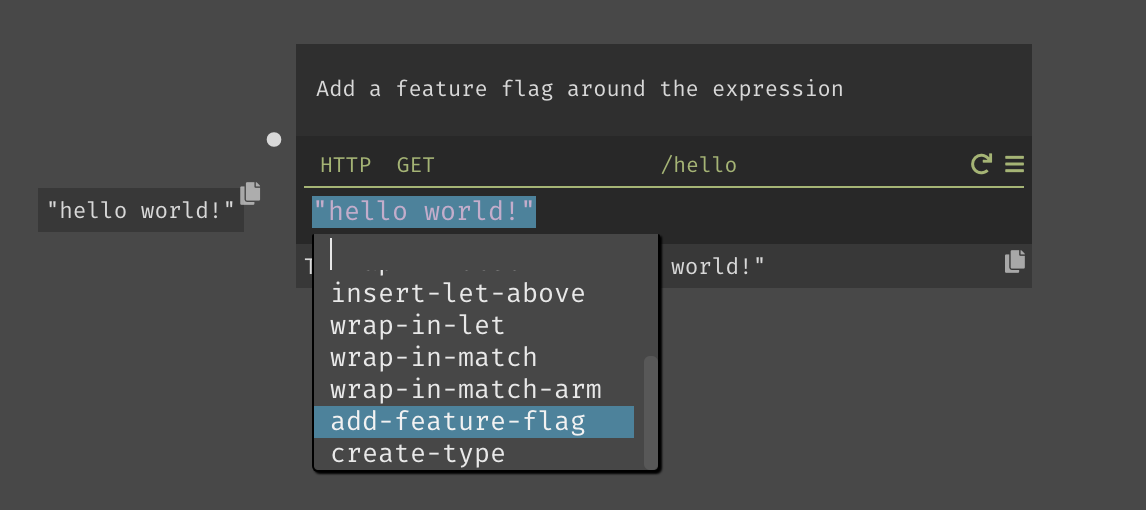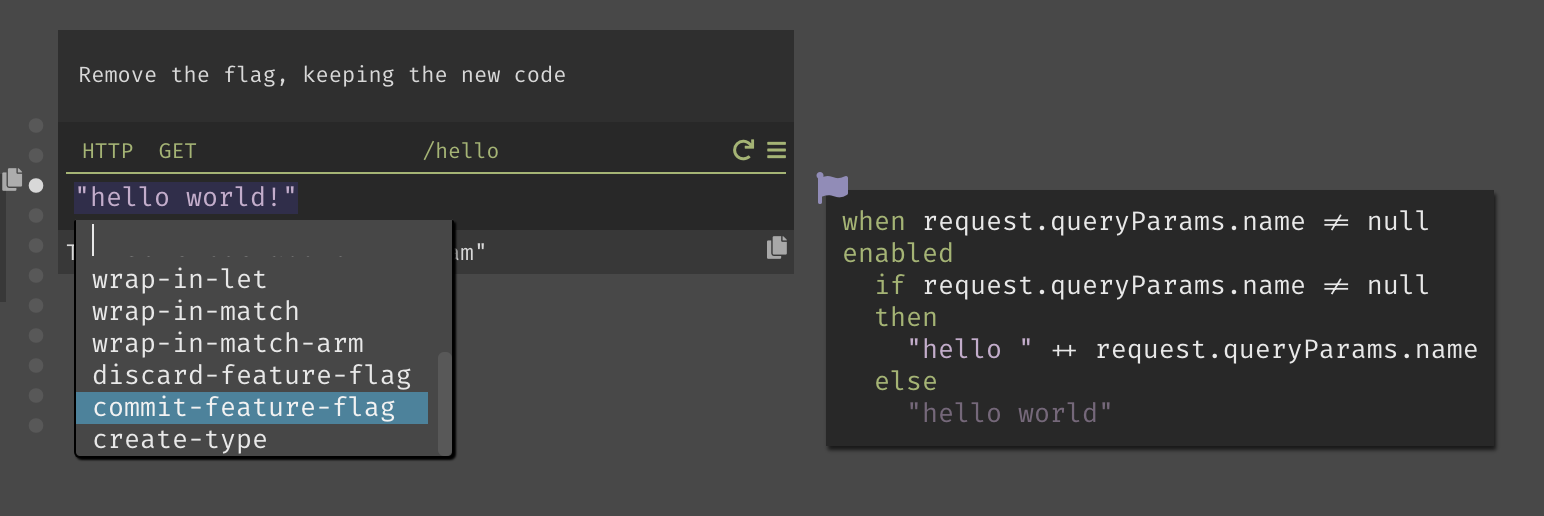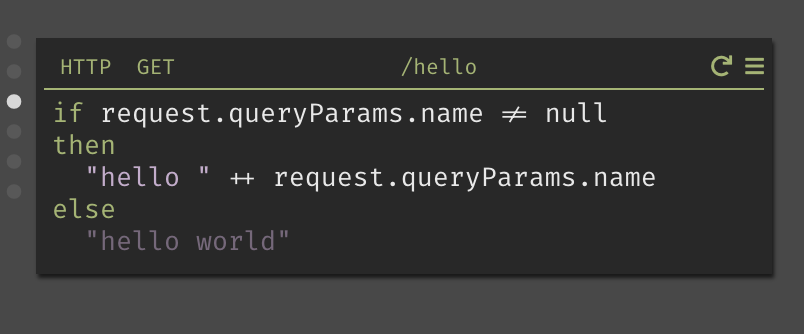How to use Feature Flags
In Darklang, all changes are made in production, on your real infrastructure. If you'd like to develop for testing, without things immediately going to users, make the changes within a feature flag.
Build a first version
Before you have users, you can just write code within handlers.

Add a Feature Flag
Open the command palette while selecting the code you want to modify (ctrl-\
or alt-x). In this case, "hello world."

Choose a "When" Condition
By default, the code you write within the flag will not be run. All traffic will still see the result of "Hello World." To have your new code run, specify a condition.

In this case, the new code will run if the traffic specifies a queryParam
name=Ellen.

Since the new execution code has not been written, if you run the code with
name=Ellen an error results.

Write New Code
Write new code for the section you're looking to change, and try it out.


For any case other than the specific condition, the old code will continue to run.
For instance, if another name is chosen in the query param:

Or if there is not a name: 
Edit Condition & Code
Adjust the condition to test any additional cases, or write more code.
Running the new code for any name: 
Making the new code take into account if a name exists or not:

Live values and traces work for analysis within feature flags, but still appear to the left of the original code.
Commit or Discard
Once you're done, re-open the command palette (ctrl-\ or alt-x and commit or
discard the code).

When you commit, the feature flag code now runs for all cases. When you discard, you return to the previous version of the code.

Limitations
Currently, you can only have one feature flag per component. There is not yet a
way to see the past history of flags (instead they are just part of the undo
stack, cmd-z or ctrl-z.)